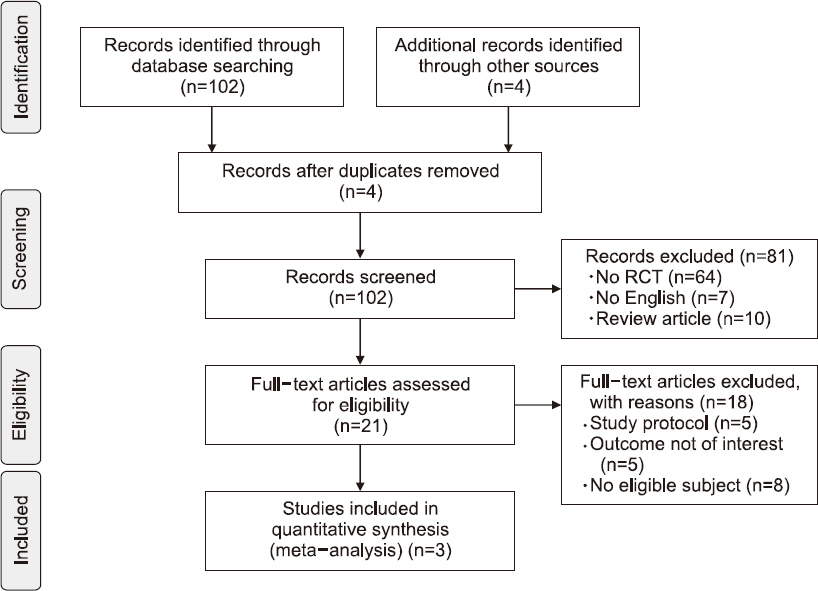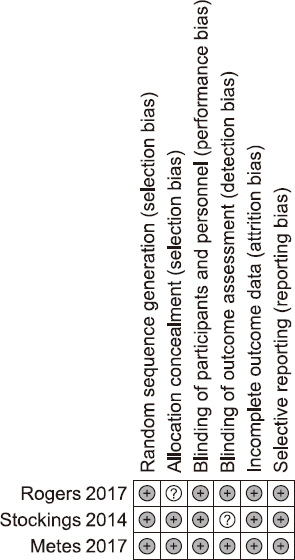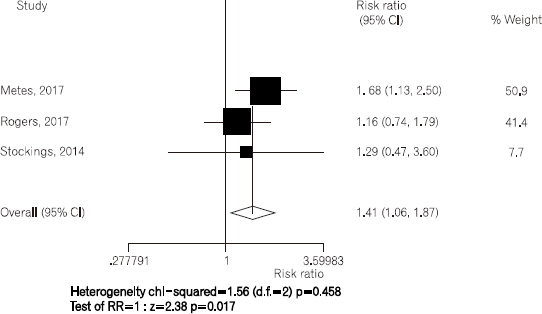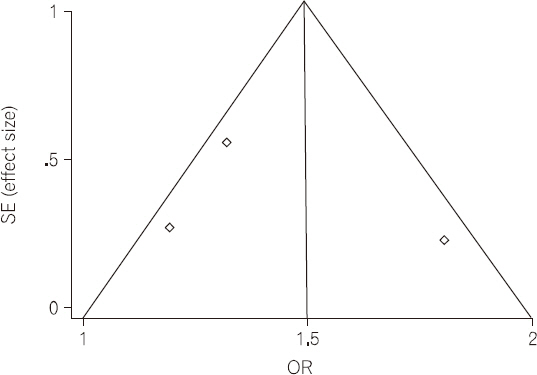Articles
- Page Path
- HOME > STRESS > Volume 27(4); 2019 > Article
-
REVIEW ARTICLE
입원한 정신질환 환자의 금연치료: 체계적 리뷰 및 메타분석 -
이준형
 , 이언숙
, 이언숙
- Smoking-Cessation Interventions for Hospitalized Patients with Mental Disorder: Systemic Review and Meta-Analysis
-
Jun Hyung Lee
 , Eon Sook Lee
, Eon Sook Lee
-
Korean Journal of Stress Research 2019;27(4):298-303.
DOI: https://doi.org/10.17547/kjsr.2019.27.4.298
Published online: December 31, 2019
인제대학교 일산백병원 가정의학과
Department of Family Medicine, Ilsan-Paik Hospital, College of Medicine, Inje University, Goyang, Korea
- Corresponding author Eon Sook Lee Department of Family Medicine, Ilsan-Paik Hospital, College of Medicine, Inje University,170 Juhwa-ro, Ilsanseo-gu, Goyang 10380, Korea Tel: +82-31-910-7115 Fax: +82-31-910-7024 E-mail: leejeny@paik.ac.kr
• Received: August 19, 2019 • Revised: December 4, 2019 • Accepted: December 5, 2019
Copyright: © The Korean Journal of Stress Research
This is an open access article distributed under the terms of the Creative Commons Attribution Non-Commercial License (http://creativecommons.org/licenses/by-nc/4.0) which permits unrestricted non-commercial use, distribution, and reproduction in any medium, provided the original work is properly cited.
- 1,656 Views
- 32 Download
- 1 Crossref
Figure & Data
References
Citations
Citations to this article as recorded by 

- Effects of a Motivational Interviewing Smoking Cessation Program on Nicotine Dependence, Smoking-Related Attitude, and Abstinence Self-Efficacy in Inpatients with Mental Disorders
Sung Hee Kim, Shin Deok Lee, Ji Young Kim, Kyung Jin Sim, Ji Yun Kim
Korean Journal of Stress Research.2021; 29(4): 242. CrossRef






 PubReader
PubReader Cite
Cite



